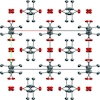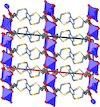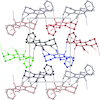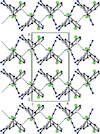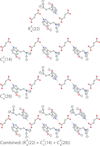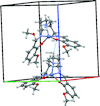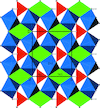issue contents
May 2021 issue

Cover illustration: Twinning in crystals occurs when different components are related by specific mathematical relationships. It affects the resulting diffraction pattern and needs to be taken into account to successfully obtain a good-quality structure solution and refinement. Tackling data from different types of twinned crystals can prove a non-trivial task, requiring a good knowledge of the topic and some field experience. By using three worked examples of differing complexity, the present paper offers practical tips and hints on how to solve the structure of crystals twinned by pseudo-merohedry, in which the relative volume fractions of individuals are close to equal. See: Parkin [Acta Cryst. (2021). E77, 452–465].
research communications
















































 journal menu
journal menu









